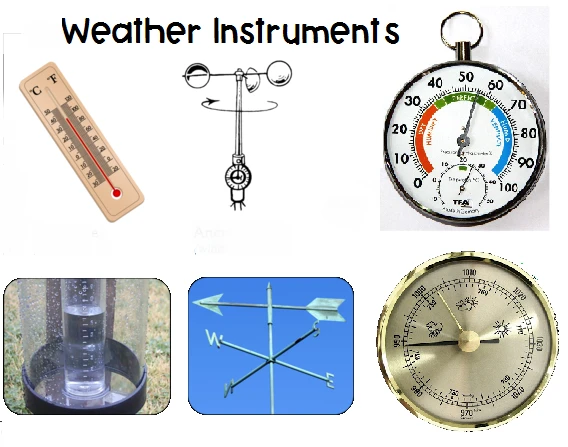
# The Instruments of the Weather
## Understanding Weather Instruments
Weather instruments are essential tools used by meteorologists and weather enthusiasts to measure and predict atmospheric conditions. These devices provide accurate data that help us understand weather patterns, forecast storms, and even track climate change over time.
## Common Weather Instruments and Their Functions
### 1. Thermometer
The thermometer is perhaps the most recognizable weather instrument. It measures air temperature, which is crucial for understanding daily weather conditions and long-term climate trends. Modern thermometers can be digital or analog, with mercury or alcohol-filled tubes.
### 2. Barometer
A barometer measures atmospheric pressure, which helps predict short-term weather changes. Falling pressure often indicates approaching storms, while rising pressure suggests fair weather. There are two main types: mercury barometers and aneroid barometers.
### 3. Hygrometer
This instrument measures humidity – the amount of water vapor in the air. Hygrometers help determine how comfortable the air feels and can predict the likelihood of precipitation. Modern electronic hygrometers provide quick and accurate readings.
### 4. Anemometer
Anemometers measure wind speed, which is important for weather forecasting, aviation, and marine activities. The most common type has three or four cups that rotate with the wind, while more advanced versions use ultrasonic technology.
### 5. Rain Gauge
A simple but vital instrument, the rain gauge measures precipitation amounts over a set period. This data helps track drought conditions, flood risks, and overall water availability in a region.
### 6. Weather Vane
Also known as a wind vane, this instrument shows wind direction. Combined with an anemometer, it provides complete wind information that’s crucial for weather prediction and various industries like agriculture and aviation.
## Advanced Weather Instruments
### Weather Balloons
These carry instrument packages called radiosondes high into the atmosphere, measuring temperature, humidity, pressure, and wind data at various altitudes. The information helps create weather models and forecasts.
### Weather Satellites
Orbiting Earth, these sophisticated instruments provide global weather data, including cloud cover, storm development, and temperature measurements across vast areas that ground instruments can’t reach.
### Doppler Radar
This advanced radar system detects precipitation, measures its motion, and estimates its type (rain, snow, hail). It’s particularly valuable for detecting severe weather like tornadoes and thunderstorms.
## The Importance of Weather Instruments
Weather instruments play a critical role in our daily lives, even if we don’t always notice them. They help:
– Protect lives by warning of dangerous weather
– Support agriculture by providing growing condition data
– Assist transportation systems in planning safe routes
– Contribute to climate change research
– Enable energy companies to predict demand
From simple thermometers to complex satellite systems, weather instruments form an interconnected network that helps us understand and predict atmospheric conditions. As technology advances, these tools become more precise, providing better forecasts and deeper insights into our planet’s weather systems.
Keyword: instruments of the weather
